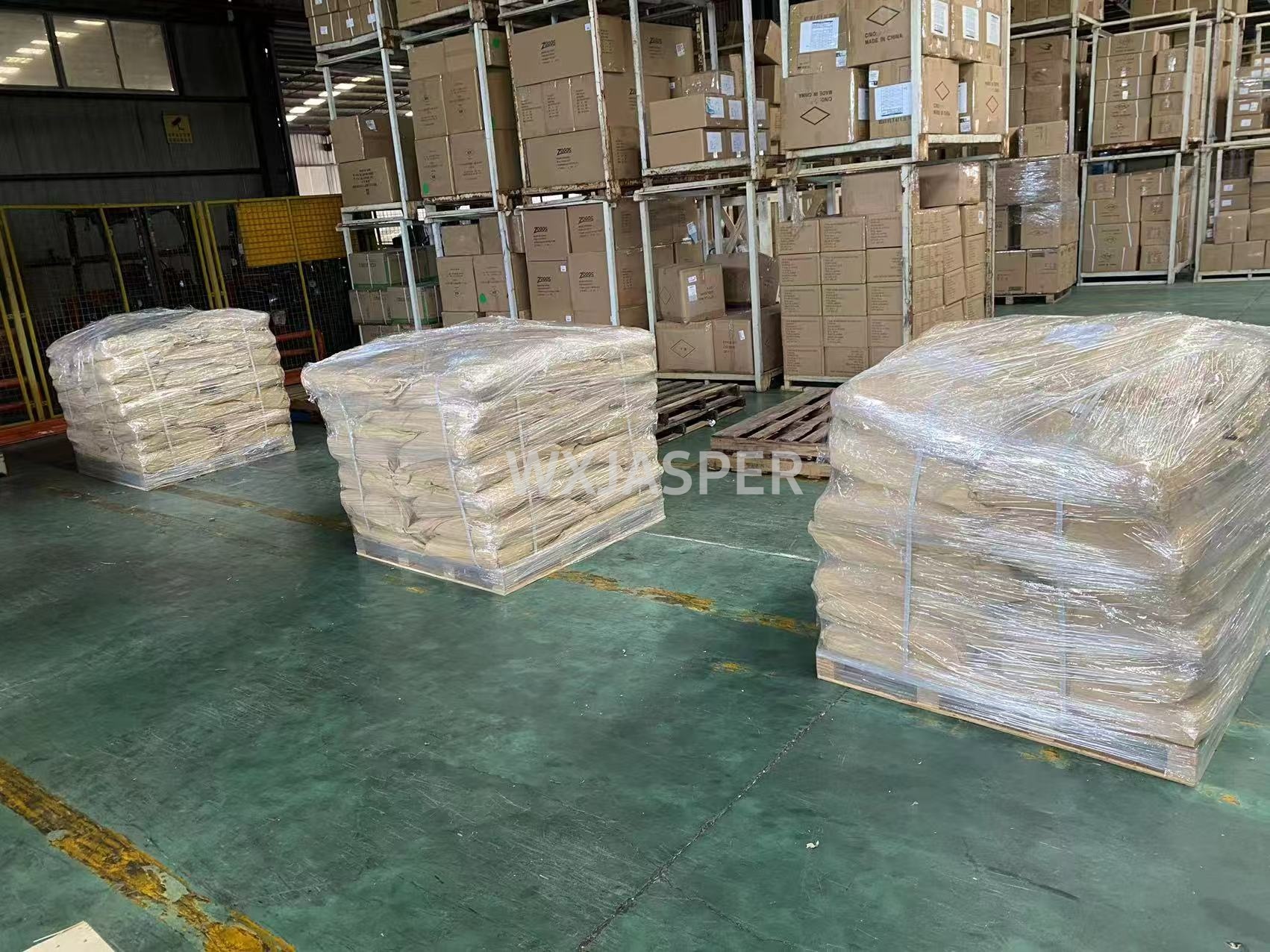Product Details
CasNo: 108-46-3
MF: C6H6O2
Appearance: powder
Delivery Time: 15 days
Packing: 25kg/bag
Purity: 99%
1. Basic Information
- Synonyms: 1,3-Benzenediol; Resorcin
- Molecular Formula: C6H6O2
- CAS No.: 108-46-3
- EINECS No.: 203-585-2
- Appearance: White crystalline powder under normal conditions; color may gradually darken during storage due to environmental factors (e.g., oxidation, light).
- Odor: Faintly sweet with a slight astringent note.
- Melting Point: 109–112℃
- Boiling Point: 281℃
- Density: 1.276 g/cm³ (at 20℃)
- Solubility: Highly soluble in common solvents such as water, ethanol, and ether; slightly soluble in chloroform and carbon tetrachloride; almost insoluble in benzene.
2. Production Processes
Currently, the mainstream production processes for resorcinol include the following:
-
Benzene Sulfonation-Alkali Fusion Method
- Process: Benzene first undergoes sulfonation with concentrated sulfuric acid to form m-benzenedisulfonic acid, which then reacts with sodium hydroxide via co-fusion to produce resorcinol.
- Characteristics: Mature technology, widely used in early industrial production. However, it generates large amounts of sulfur-containing wastewater, posing significant environmental pressure.
-
m-Diisopropylbenzene Oxidation Method
- Process: Using m-diisopropylbenzene as the raw material, resorcinol and acetone are produced through oxidation reactions.
- Characteristics: High atom economy; the by-product acetone has economic value; fewer pollutants are generated, aligning with environmental protection trends. This is an advanced process with increasing industrial application.
-
Phenol Hydroxylation Method
- Process: Phenol reacts with hydrogen peroxide in the presence of a catalyst to produce resorcinol.
- Characteristics: Mild reaction conditions and low equipment requirements. However, the cost and activity of the catalyst are key factors limiting its large-scale industrial application.
3. Quality Specifications
Resorcinol products have corresponding quality standards based on different application fields, with key indicators as follows:
| Index |
Premium Grade Requirement |
First-Grade Requirement |
| Purity (HPLC) |
≥99.70% |
≥99.20% |
| Content (Chemical Method) |
≥99.0% |
≥98.50% |
| Crystallization Point |
≥109.0℃ |
≥109.0℃ |
| Appearance |
White flakes; slight color darkening allowed during storage |
White flakes; slight color darkening allowed during storage |
4. Applications
4.1 Pharmaceutical Industry
- Resorcinol has bactericidal properties and is used in the preparation of intestinal disinfectants and drugs for treating various skin conditions (e.g., eczema, tinea, acne, seborrheic dermatitis).
- Common formulations include 2%–10% resorcinol ointments or lotions.
- Caution: It may cause contact dermatitis; infants and young children should not use it in large areas or at high concentrations. Children applying it to wounds may develop methemoglobinemia.
4.2 Agricultural Industry
- Used as a raw material for synthetic agricultural films.
- Serves as an intermediate in the production of insecticides (e.g., coumaphos) and herbicides (e.g., oxyfluorfen), supporting pest control and weed management in agricultural production.
4.3 Dye Industry
- A key intermediate for synthesizing fluorescent dyes and acid eosin.
- When mixed with catechol, amines, and oxidants, it is used for fur dyeing and as a component in hair dyes.
4.4 Adhesive Industry
- Used to produce resorcinol-formaldehyde resin, a special thermosetting wood adhesive. It is applied in high-end furniture manufacturing for bonding wood, providing strong adhesion.
- In the production of tire cord fabrics, resorcinol is used as an adhesive alongside formaldehyde resin and resorcinol-formaldehyde-vinylpyridine copolymer resin, which is critical for ensuring tire quality and performance.
4.5 Other Applications
- In the plastic industry: Used in the synthesis of certain plastics and resins.
- Used in the production of explosives, liquid crystal polymers, and UV absorbers.
- Serves as an organic chemical raw material for synthesizing celluloid, tannic acid, p-aminosalicylic acid, m-chlorophenol, and trinitroresorcinol. Its derivatives are also important raw materials for numerous fine chemicals.
5. Packaging and Storage
5.1 Packaging
- Common packaging includes 25 kg kraft paper bags, 25 kg fiber drums, or 500 kg jumbo bags. These materials provide good moisture and oxidation resistance, ensuring product quality stability during storage and transportation.
5.2 Storage
- Store in a cool, well-ventilated warehouse. Keep away from ignition sources and heat; avoid direct sunlight.
- Resorcinol is prone to oxidation and discoloration when exposed to air, so it must be sealed tightly. Store separately from oxidants and acids; do not mix storage.
- The storage area should be equipped with appropriate materials to handle potential leaks.
6. Safety Information
6.1 Toxicity
- Resorcinol is moderately toxic and can be absorbed through the skin. It has weak irritation to the skin and mucous membranes. Absorption through the skin or ulcer surfaces, or prolonged contact, may cause myxedema.
- Systemic reactions are similar to phenol poisoning; severe cases may lead to convulsions. It may also cause contact sensitization reactions.
6.2 Hazardous Characteristics
- Flammable: Ignites when exposed to open flames or high heat.
- Its powder can form explosive mixtures with air; ignition may occur when the mixture reaches a certain concentration and comes into contact with sparks.
6.3 Emergency Measures
- Skin Contact: Immediately remove contaminated clothing and rinse the affected area with large amounts of flowing water for at least 15 minutes, then seek medical attention.
- Eye Contact: Lift the eyelids and rinse with flowing water or normal saline, then seek medical attention promptly.
- Inhalation: Quickly move to a well-ventilated area with fresh air; maintain unobstructed breathing. If breathing is difficult, administer oxygen; if breathing stops, perform artificial respiration immediately and seek medical attention.
- Ingestion: Drink plenty of warm water to induce vomiting, then seek medical attention.
- Fire Fighting: Use mist water, foam, dry powder, carbon dioxide, or sand as extinguishing agents.


